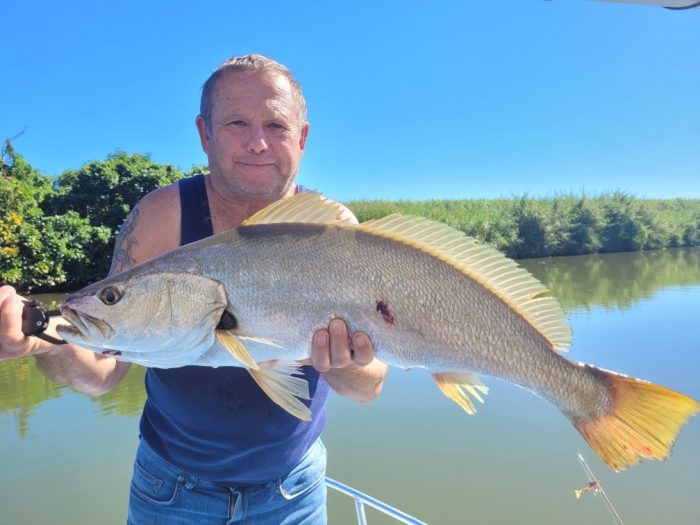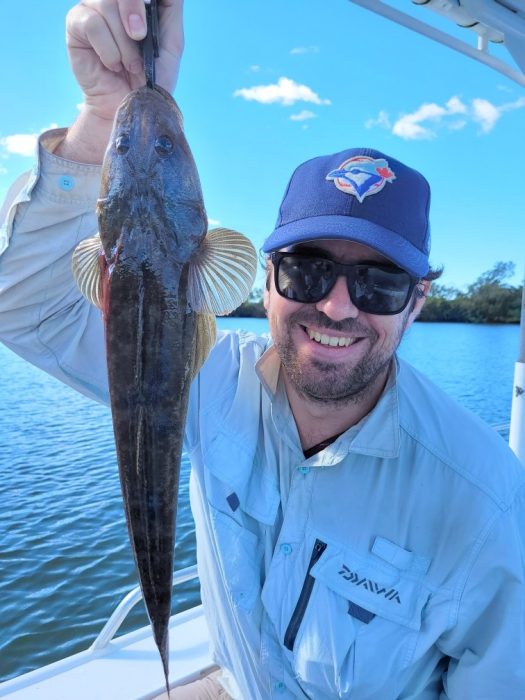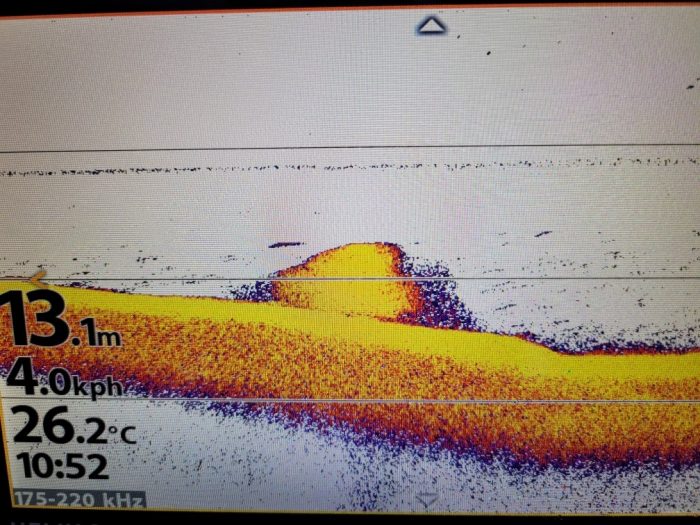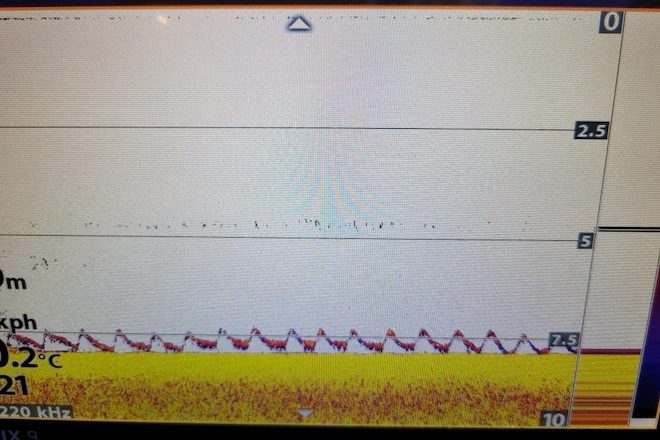In this month’s article I would like to give you a few tips on one of my favourite techniques, which involves using small lures in deep water. The lures needed for this technique are standard soft plastics and my favourites are small metal and plastic vibes. When discussing what areas this form of fishing would work the best, I find that the deep holes in the rivers that are 6m and deeper are the best. Deep water jigging
Sometimes I head down to the mighty Clarence River where I am working with my clients in holes that are over 20m deep. Let’s get started on how to do it. The first thing I do is use my sounder to locate bait schools that are holding close to or even better on the bottom of the hole. If I don’t find bait on the bottom I will pull up stumps and keep moving to other holes until I find what I call a target drop. Deep water jigging

Sometimes you will see big fish like jewies or trevally marking around the bait schools, which show in what’s called arches, which is absolutely fantastic. Other times you will see bait but no arches, but you can almost bet that there will be flathead lying on the bottom under the bait, which you can’t usually see on the sounder. So now that you have found a target drop, you can position the boat directly over it and lower the lure to the bottom as quick as possible.Deep water jigging

Your line will go slack, which means you have touched down on the bottom. The next step is to lower your rod tip to the water and use a very even series of short sharp lift and drops of the rod tip, about 50cm up and down is fine. These short even jigs of the rod tip will help your lure maintain contact with the bottom and that is where you want it to be.Deep water jigging
The real wizardry is keeping the small lure continuously on the bottom while drifting in deep water with the tidal flow. The trick is very clever boat handling skills, with the use of either your petrol or electric motor by making small forward or reverse movements to insure that your line stays completely vertical. For example, if you are drifting and the angle of your line starts moving away from the boat, you reverse slightly back to keep it vertical.Deep water jigging

In contrast if the line starts to move under the boat you have to shunt the boat forward, with this boat correction usually being needed when the wind is opposing the tide. This technique might sound a bit intimidating, but trust me, it is a very simple and highly effective way of fishing and something that all anglers can learn with time and practise.Deep water jigging
 Bush ‘n Beach Fishing Magazine Location reports & tips for fishing, boating, camping, kayaking, 4WDing in Queensland and Northern NSW
Bush ‘n Beach Fishing Magazine Location reports & tips for fishing, boating, camping, kayaking, 4WDing in Queensland and Northern NSW









